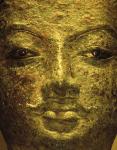Through different series of works, Pierre Sernet explores the contrasts and similarities that exist across nationalities, ethnicities, belief systems and lifestyles.His pictures are intended to show that seemingly different and incompatible cultures, lifestyles or people can cohabit together in harmony.
In the series “One”, often referred to as his “Guerrilla Tea” series, he presents photographs in which randomly selected guests, from a variety of cultural worlds and backgrounds, are invited and shown sharing a bowl of Tea.
Utilizing a stylized Japanese Tea Room in the shape of a cube, in which he performs traditional Tea ceremonies, Sernet plays on the juxtaposition of out of context and apparently incompatible cultures or environments.
With the cube being used as a conceptual space, Sernet invites viewers to place their own set of cultural, spiritual, religious or philosophical values within it.
The purpose is to have audiences question the cube’s opposition or similarities to the diverse environment in which it is placed and have viewers see each of these spaces in a new and different way, ultimately showing that these seemingly different and incompatible worlds are in fact based on similar universal values that can enable seemingly different worlds to cohabit together.
In his “Love” series, Sernet explores the uniquely distinct visual and linguistic representation of scripts, confronting the viewer with the seemingly incomprehensible characters of Urdu, Mongolian, Wolof, Russian or Chinese.
Using chromatic variety to enhance the uniqueness of each script, Sernet further isolates the nature of each character giving them an abstract and detached feeling.
Only when the viewer realizes the communality of meaning of each piece does it become clear that despite differing scripts or geographic, social and cultural diversities, Man shares and expresses this most elemental feeling in the same way, even if does not always appear so.
 His “Face” Series explores cultural differences and similarities by looking at individual faces around the world in an unexpected way. Instead of photographing the human subject directly, Sernet utilizes what can be considered the ultimate representation of Man around the world and throughout history: sculptures of Man, by Man.
His “Face” Series explores cultural differences and similarities by looking at individual faces around the world in an unexpected way. Instead of photographing the human subject directly, Sernet utilizes what can be considered the ultimate representation of Man around the world and throughout history: sculptures of Man, by Man.
By taking extreme close-ups depicting the countenances of statuary of differing, yet recognizable peoples from across the globe, Sernet reduces these iconic representations down to their simplest common denominator by stripping them of their ornamentation and cultural trappings.
Each face is reduced by using a minimalist formula showing only “two eyes, a nose and a mouth,” which causes each image to take on a surprising similarity that transcends ethnic and cultural boundaries.
Whether it is a Chinese lacquered Buddha, African terracotta, French Bronze or American Marble staring down intensely at the viewer, with or without any eyes, Sernet unites his works by creating a near mathematical relationship between them. The result is a series of faces that show the communality of Mankind throughout place and time.
In the “Thoughts” series the viewer is presented with what at first simply appears to be close ups of flowers or personal objects; however, looking past the beautiful or wilted displays, the viewer soon realizes that these arrangements represent something more; he may even discover a piece of an urn or a corner stone and realize these are all offerings made to lost ones.
Each image is named after the person to whom the offering was made or where it was made. By looking at this array of names and displays from different parts of the world, the viewer realizes people’s similarity of thought and the close connections of mankind in dealing with death and remembrance.Transcending race, religion, sex or culture these “Thoughts” represent a universal and shared feeling that unites the people of earth.
 The “Colors” Series delves into the relatively modern concept of Nationality while continuing Sernet’s research into the links that unite the different people of the world.If the notion of banner or standard goes back to historical times as a way to differentiate among individual groups, it has only recently been adopted on a global basis though the use of country flags.While the raising of the colors usually conjures nationalistic feelings, by blurring the image of each country’s flag, Sernet reduces each image to an accumulation of colors that themselves blur that notion of uniqueness and nationality.The results are a series of images that are intended to show the universality of mankind rather than the dividing aspects of nationality.
The “Colors” Series delves into the relatively modern concept of Nationality while continuing Sernet’s research into the links that unite the different people of the world.If the notion of banner or standard goes back to historical times as a way to differentiate among individual groups, it has only recently been adopted on a global basis though the use of country flags.While the raising of the colors usually conjures nationalistic feelings, by blurring the image of each country’s flag, Sernet reduces each image to an accumulation of colors that themselves blur that notion of uniqueness and nationality.The results are a series of images that are intended to show the universality of mankind rather than the dividing aspects of nationality.
 In his most recent series “Synonyms”, the artist once again uses an indirect image of the subject to convey common denominators among people around the world.
In his most recent series “Synonyms”, the artist once again uses an indirect image of the subject to convey common denominators among people around the world.
Although he photographs the bodies of both individuals and couples from various cultural or ethnic backgrounds, he does not record them directly—only the fleeting forms their shadows leave.
Shot through scrims while engaged in erotic poses or sexual acts, the subjects become silhouettes. The works—richly printed on Hahnemühle paper—thus join a long tradition, stretching from Greek black-figure vases to miniature 18th-century portraiture to the recent racially charged scenes of Kara Walker.
Only through the title of each piece, giving the names of the people photographed, can the viewer guess the subjects’ sex, cultural background or nationality.
Consequently, as with a Rorschach test or Wittgenstein’s famed duck-rabbit, what is perceived depends upon the mental disposition of the viewer, conditioned by psychological and social factors.
By reducing the individualistic representations of bodies to two dimensional ephemeral images, Sernet Invites viewers to transcend physical representation and discover the likeness to their own image; the ultimate aim being for viewers to realize their communality with mankind.
© copyright 2018 P.Sernet


